
All categories
Featured selections
Trade Assurance
Buyer Central
Help Center
Get the app
Become a supplier

(5720 products available)








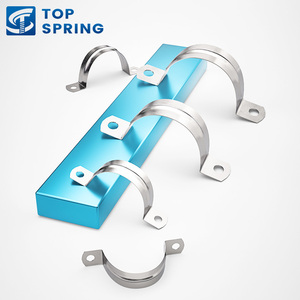
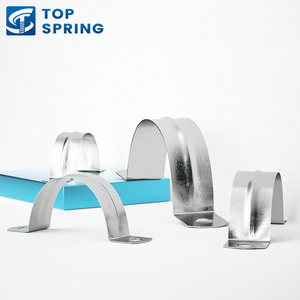












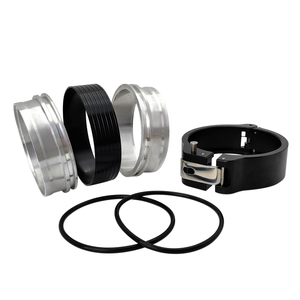




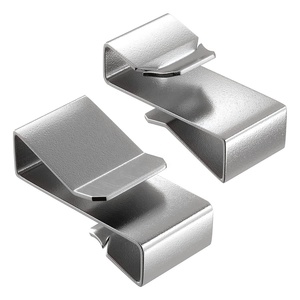
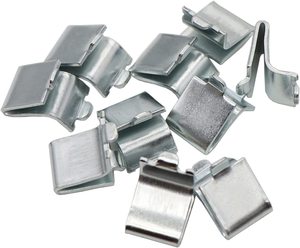

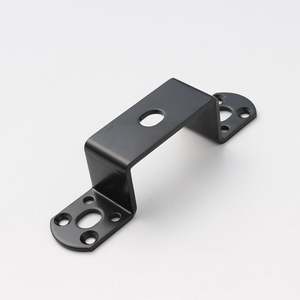




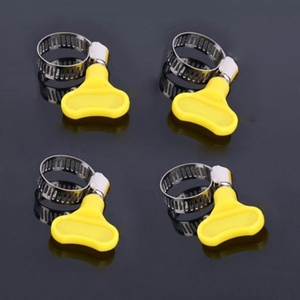
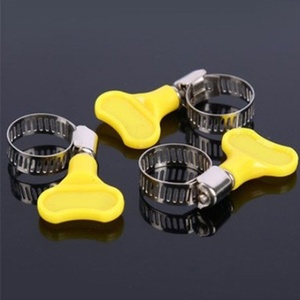



Gas pipe clamps come in various types. All these types play unique functions that differ depending on set parameters. A few of the most common types include:
Adjustable Clamps
These clamps offer flexibility in terms of size and application capacities. These adjustable clamps ensure users can accommodate various pipe diameters. At the same time, the adjustable feature ensures a secure fit. Users who handle multiple pipe sizes frequently find these clamps particularly beneficial in their daily operations. This wide application is because they allow quick adjustments without requiring an inventory of different-sized clamps. Adjustable gas pipe clamps maintain a tight grip even under pressure. This quality helps reduce the number of replacements needed and thus saves on maintenance costs.
Rigid Clamps
These clamps, as the name suggests, are designed for fixed applications. The rigid gas line clamps provide a solid, unyielding support for pipes. Users apply them in areas where gas lines do not require much movement. This application is primarily in structural areas where misalignment may lead to severe consequences. The durability and strength of these clamps make them suitable for long-term stability. Therefore, these factors reduce wear and tear on both the pipe and the surrounding infrastructure.
Vibration-Damping Clamps
If there are any concerns with vibrations, then these are the clamps to go for. Certain external forces cause vibrations in pipelines. These forces can lead to instability over time. The vibration-damping clamps help mitigate such risks. They incorporate rubber or elastomer components into their designs. These components absorb the tensile forces affecting the pipeline, thus reducing stress. These clamps are fundamental to extending the lifespan of not only the pipes but the whole installation. This lifespan is especially critical for operations in high-mobility environments or near heavy machinery.
Two-Part Clamps
The feature that makes these clamps stand out is their design. The clamps consist of two separate pieces that align over the pipe and are then bolted together. This design offers easy installation and maintenance. Users particularly prefer two-part clamps for their reusability. Also, there is no need for a complete dismantling of an installation if extensions or repairs are needed. They provide a secure hold and are compatible with varying pipe sizes, making them widely applicable across multiple industries.
Secure Support and Alignment
The primary function of gas pipe clamps is to provide secure support and proper alignment to the pipes. In an industry where safety is the primary concern, having properly secured gas pipes is critical to avoid leaks or system failures. Gas line clamps ensure that pipes remain in their designated positions. In doing this, they lessen the risks associated with misalignment. Misalignment may result in excess pressure on the joints or even damage to the pipe infrastructure.
Shock and Vibration Absorption
However, pipes may experience shocks or vibrations from external activities. These factors may affect the pipe's integrity over time. Gas pipe clamps incorporate rubber or elastomer inserts that dampen these vibrations. The damping protects the pipe from abrasions as well as nicks and reduces the stress on the pipeline system. Whether it is industrial machinery, environmental factors, or earthquakes, having a vibration–damping clamp goes a long way in ensuring that the gas lines stay intact and secure.
Corrosion Resistance
Gas pipes in external or humid environments are prone to corrosion. The corrosion can eventually lead to leaks and a hazardous environment. Corrosion-resistant clamps, therefore, provide ice protection to the pipes by inhibiting or stopping rust formation. These clamps are mostly manufactured with stainless steel or other anti-corrosive materials. This feature allows them to extend the lifespan of both the clamps and the gas pipelines. Users commonly prefer these clamps in outdoor installations or areas with high humidity or extreme weather conditions.
Flexibility with Different Pipe Materials
Gas pipe clamps are designed to work with a variety of pipe materials. This versatility makes them a key component in multiple applications. Whether the pipes are metallic or non-metallic, these clamps can provide the necessary support without causing damage. This functionality is particularly important in industries with varying operational conditions. These conditions may require the use of multiple pipe materials to counter different challenges.
Industrial Facilities
The gas pipe clamps provide support for extensive pipeline systems. The clamps secure pipes and thus ensure operational efficiency. This role is crucial within industrial spaces such as oil and gas refineries, chemical plants, and manufacturing facilities. These industries commonly utilize vibration-damping and corrosion-resistant clamps as the conditions are often severe. These conditions are high in temperature, humidity, and pressure. For that reason, reliable pipe support is critical here in preventing leaks, downtime, and costly repairs.
Commercial Buildings
Gas pipe clamps are standard in commercial buildings to support HVAC systems, hot water systems, and kitchen equipment gas lines. With the high demand from businesses such as restaurants or large office spaces, the pipelines tend to be extensive. That is why having proper support, like rigid and adjustable pipe clamps, is essential for maintaining system integrity and efficiency, after all. It is also crucial to ensure that gas lines operate safely and efficiently.
Transportation Systems
Gas line clamps also play a role in the transportation of gases through pipelines. These clamps ensure the longdistance pipeline systems maintain their integrity over long stretches. It is especially critical in applications such as natural gas transportation. Here, the pipelines may run across varying terrains and thus need frequent reliable support. This factor prevents pipe sagging or cracking, which would disrupt the gas supply.
Underground Installations
Gas pipe clamps are vital for conditions where the pipes are buried underground. The clamps, manufactured with anti-corrosive materials, protect the pipes from soil-induced corrosion. They also give the pipes the necessary support to withstand soil pressure. It all means that underground gas line bursts, leaks, or any maintenance costs are not incurred. This application is a common staple for both municipal services and any other infrastructure where the pipes are laid underground.
The Pipe Material
One of the most critical factors for gas pipe clamps is that they are supposed to be compatible with the pipe material. The clamps come in various materials. For example, stainless steel works well with metallic pipes. On the other hand, non-metallic piping requires a material that won’t cause any adverse chemical reactions.
The Pipe Diameter
Buying a clamp whose size is fit for the pipe diameter is necessary. It enables the clamp to secure the pipe without either crushing it or allowing excessive movement. Most adjustable clamps handle a range of sizes. Fixed clamps, though, offer a size-specific support. The users must always ensure that the clamp size and the pipe diameter are compatible. The compatibility offers both efficacy and nothing more. It also ensures safety, after all, when the pipe is properly clamped.
Operating Conditions
These conditions, including temperature, pressure, and environmental exposure, define the type of clamp to go for. High-Temperature environments call for clamps that can withstand such temperatures. These high temperatures are usually manufactured with heat-resistant material. In conditions where there is high pressure, one needs a robust clamp design to bear the stress without deformation. Environmental exposure is just as critical. For instance, if the installation environment has high humidity or corrosive chemicals, go for corrosion-resistant stainless steel clamps.
The Type of Clamp
The selection of the gas pipe clamp type highly depends on the application requirements. Flexible applications, after all, require adjustable clamps to fit different pipe diameters. On the other hand, applications that require constant conditions prefer rigid clamps for their support. Vibration-damping clamps are particularly critical for spaces where mechanical vibrations are commonplace. Lastly, two-part clamps are ideal for installations where future maintenance or pipe replacements are likely.
Inspect Regularly
Frequent and thorough inspections of gas pipe clamps will help identify any signs of wear, corrosion, or misalignment. In this case, look for signs of rust on corrosion-resistant stainless steel clamps. This way, they age less and are not affected by environmental conditions. Also, check for any physical deformation or cracks. Immediately replacing worn-out clamps is one of the ways to ensure the integrity of the whole gas pipeline system.
Keep Clean
Debris, dirt, or other contaminants, unfortunately, can lead to the early deterioration of gas pipe clamps. To mitigate this, regularly cleaning the area around the clamps and the pipes is a must. The cleaning is for ensuring that any material that contributes to corrosion or interferes with the clamp's functionality is removed. It is also essential to use non-abrasive materials when cleaning. The materials should not affect either the clamp or the pipe in any way.
Monitor Pipe Movement
A common maintenance concern is ensuring the clamp stops any excessive pipe movement from occurring. Mechanical vibrations or temperature fluctuations can cause one or two pipes to expand and contract. These conditions may even result in pipe movement. Regularly checking for signs of movement will help identify this problem early enough so it does not become a menace. Users have to either tighten adjustable clamps or replace them with new ones to accommodate the new length of the pipes.
Check Bolts and Fasteners
The bolts and fasteners hold gas pipe clamps in their positions, and checking them for wear ensures there is no compromise on safety. One has to inspect the screws for signs of stretching or deformation. It is ideal to replace worn-out bolts and fasteners as soon as possible. In doing so, this measure will maintain all the clamp's effectiveness and secure the pipes in position.
Yes, the adjustable clamps are designed to fit various pipe sizes. It makes them ideal for applications requiring flexibility.
Stay stainless steel is the best material for an environment that is prone to high corrosion.
There are clamps manufactured with different material types. That is why they can properly support both metallic and non-metallic pipes without adverse reactions.
Conducting inspections at least once every six months is necessary. Further, go for constant checks when there are changes in operating conditions.
A vibration-damping clamp's primary duty is to absorb the pipeline's mechanical vibrations. It, therefore, protects the pipes from damage over time.